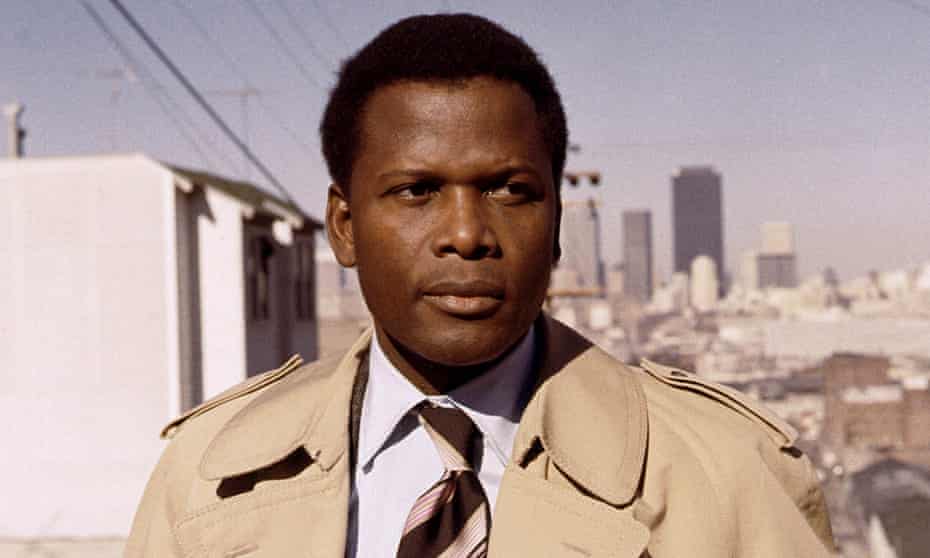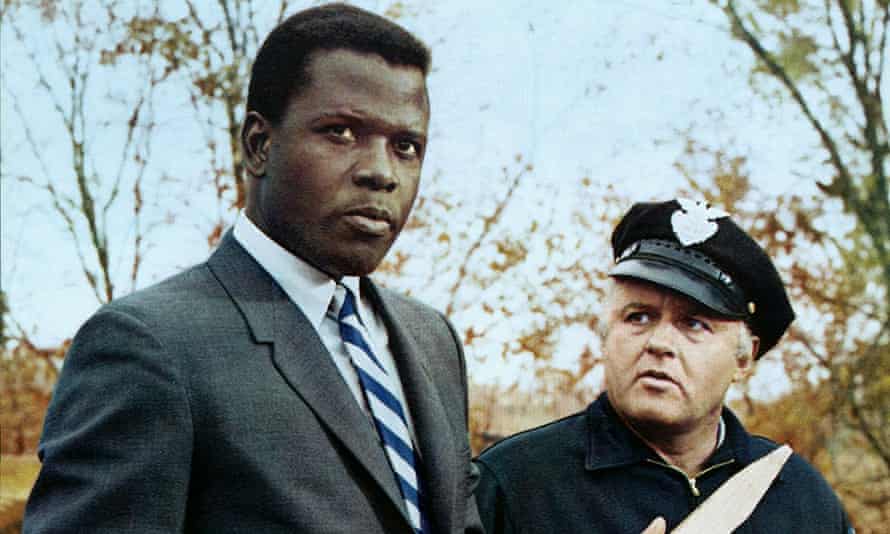January 12, 2022

Silhouette of crosses held up at sunset (Shutterstock)
“If you are neutral in situations of injustice, you have chosen the side of the oppressor. If an elephant has its foot on the tail of a mouse and you say that you are neutral, the mouse will not appreciate your neutrality.” — Archbishop Desmond Tutu
The world lost a great moral leader this Christmas when Archbishop Desmond Tutu passed away at the age of 90. I had the honor of meeting him a few times as a child. I was raised by a family dedicated to doing the work of justice, grounded in the Constitution, the Declaration of Independence, and also sacred texts and traditions. We hosted the archbishop on several occasions when he visited Milwaukee — both before the end of apartheid and after South Africa’s Truth and Reconciliation Commission was formed in 1996.
"To combat [White Christian Nationalism]... it’s necessary to build a multiracial moral movement that can speak directly to the needs and aspirations of poor and dispossessed Americans and fuse their many struggles into one."
In the wake of one visit, he sent a small postcard that my mom framed and placed on the bookcase near our front door. Every morning before school I would grab my glasses resting on that same bookcase and catch a glimpse of the archbishop’s handwritten note. This wasn’t inadvertent on my mom’s part. It was meant as a visual reminder that, if I was to call myself a Christian — which I did, serving as a Sunday school teacher from the age of 13 and a deacon at 16 — my responsibility was to advocate for policies that welcomed immigrants, freed those held captive by racism and injustice, and lifted the load of poverty.
Given our present context, the timing of his death is all too resonant. Just over a year ago, the world watched as a mob besieged the U.S. Capitol, urged on by still-President Donald Trump and undergirded by decades of white racism and Christian nationalism. January 6th should have reminded us all that far from being a light to all nations, American democracy remains, at best, a remarkably fragile and unfinished project. On the first anniversary of that nightmare, the world is truly in need of moral leaders and defenders of democracy like Tutu.
The archbishop spent his life pointing to what prophets have decried through the ages, warning countries, especially those with much political and economic power, to stop strangling the voices of the poor. Indeed, the counsel of such prophets has always been the same: when injustice is on the rise, there are dark forces waiting to demean, defraud, and degrade human life. Such forces hurt the poor the most but impact everyone. And they often cloak themselves in religious rhetoric, even as they pursue political and economic ends that do anything but match our deepest religious values.
Democracy At Stake
“What has happened to us? It seems as if we have perverted our freedom, our rights into license, into being irresponsible. Perhaps we did not realize just how apartheid has damaged us, so that we seem to have lost our sense of right and wrong.” — Archbishop Desmond Tutu
By now, lamenting the condition of American democracy comes almost automatically to many of us. Still, the full weight of our current crisis has yet to truly sink in. A year after the attempted insurrection of January 6, 2021, this nation has continued to experience a quieter, rolling coup, as state legislatures have passed the worst voter suppression laws in generations and redrawn political maps to allow politicians to pick whom their voters will be. The Brennan Center for Justice recently reported that more than 400 voter suppression laws were introduced in 49 states last year. Nineteen of those states passed more than 30 such laws, signaling the biggest attack on voting rights since just after the Civil War. And add to that another sobering reality — two presidential elections have now taken place without the full protections of the 1965 Voting Rights Act.
This attack on democracy, if unmet, could alter the nature of American elections for at least a generation to come. And yet, so far, it’s been met with an anemic response from a painfully divided Congress and the Biden administration. Despite much talk about the need to reform democracy, Congress left for the holidays without restoring the Voting Rights Act or passing the For the People Act, which would protect the 55 million voters who live in states with new anti-voter laws that limit access to the ballot. If those bills don’t pass in January (or only a new proposal by Republican senators and Joe Manchin to narrowly reform the Electoral Count Act of 1887 is passed), it may prove to be too late to save our democracy as well as any hopes that the Democratic Party can win the 2022 midterm elections or the 2024 presidential race.
Sadly, this nation has a strikingly bipartisan consensus to thank for such a moral abdication of responsibility. Democratic Senators Joe Manchin and Kyrsten Sinema, in particular, have been vocal in refusing to overturn the filibuster to protect voting rights (though you know that, were the present Republicans in control of the Senate, they wouldn’t hesitate to do so for their own grim ends).
And of course, democracy isn’t the only thing that demands congressional action (as well as filibuster reform). Workers have not seen a raise in the minimum wage since 2009 and the majority of us have no paid sick leave in the worst public-health crisis in a century. Poor and low-income Americans, 140 million and growing, are desperately in need of the child tax credit and other anti-poverty and basic income programs at precisely the moment when they’re expiring and the pandemic is surging once again. And Manchin has already ensured weakened climate provisions in President Biden’s Build Back Better agenda that he claims he just can’t support (not yet anyway). If things proceed accordingly, in some distant future, sadly enough, geological records will be able to show the impact of our government’s unwillingness to act quickly or boldly enough to save humanity.
As Congress debates voting rights and investing in the people, it’s important to understand the dark forces that underlie the increasingly reactionary and authoritarian politics on the rise in this country. In his own time, Archbishop Tutu examined the system of white-imposed apartheid through the long lens of history to show how the Christianity of colonial empire had become a central spoke in the wheel of violence, theft, and racist domination in South Africa. He often summed up this dynamic through parables like this one: “When the missionaries came to Africa, they had the Bible and we had the land. They said, ‘Let us pray.’ We closed our eyes. When we opened them, we had the Bible and they had the land.”
In our own American context, they have the Bible and, as things are going, they may soon have the equivalent of “the land,” too. Just look carefully at our political landscape for evidence of the rising influence of white Christian nationalism. While it’s only one feature of the authoritarianism increasingly on vivid display in this country, it’s critical to understand, since it’s helped to mobilize a broad social base for Donald Trump and the Republicans. In the near future, through control over various levers of state and federal power, as well as key cultural and religious institutions, Christian nationalists could find themselves well positioned to shape the nation for a long time to come.
Confronting White Christian Nationalism
“There are very good Christians who are compassionate and caring. And there are very bad Christians. You can say that about Islam, about Hinduism, about any faith. That is why I was saying that it was not the faith per se but the adherent. People will use their religion to justify virtually anything.” — Archbishop Desmond Tutu
Christian nationalism has influenced the course of American politics and policy since the founding of this country, while, in every era, moral movements have had to fight for the Bible and the terrain that goes with it. The January 6th assault on the Capitol, while only the latest expression of such old battlelines, demonstrated the threat of a modern form of Christian nationalism that has carefully built political power in government, the media, the academy, and the military over the past half-century. Today, the social forces committed to it are growing bolder and increasingly able to win mainstream support.
When I refer to “Christian nationalism,” I mean a social force that coalesces around a matrix of interlocking and interrelated values and beliefs. These include at least six key features, though the list that follows is anything but exhaustive:
* First, a highly exclusionary and regressive form of Christianity is the only true and valid religion.
* Second, white supremacy, patriarchy, and heteronormativity are “the natural order” of the world and must be upheld by public policy (even as Latino Protestants swell the ranks of American evangelicalism and women become important gate-keepers in communities gripped by Christian nationalism).
* Third, militarism and violence, rather than diplomacy and debate, are the correct ways for this country to exert power over other countries (as it is our God-given right to do).
* Fourth, scarcity is an economic reality of life and so we (Americans vs. the world, white people vs. people of color, natural-born citizens vs. immigrants) must compete fiercely and without pity for the greater portion of the resources available.
* Fifth, people already oppressed by systemic violence are actually to blame for the deep social and economic problems of the world — the poor for their poverty, LGBTQIA people for disease and social rupture, documented and undocumented immigrants for being “rapists and murderers” stealing “American” jobs, and so on.
* Sixth, the Bible is the source of moral authority on these (and other) social issues and should be used to justify an extremist agenda, no matter what may actually be contained in the Good Book.
Such ideas, by the way, didn’t just spring up overnight. This false narrative has been playing a significant, if not dominant, role in our politics and economics for decades. Since childhood — for an example from my own life — I’ve regularly heard people use the Bible to justify poverty and inequality. They quote passages like “the poor you will always have with you” to argue that poverty is inevitable and can never be ended. Never mind the irony that the Bible has been one of the only forms of the mass media — if you don’t mind my calling it that — which has had anything good to say about the poor (something those in power have tried to cover up since the days of slavery).
In many poor communities — rural, small town, and urban — churches are among the only lasting social institutions and so one of the most significant battlegrounds for deciding which moral values will shape our society, especially the lives of the needy. Indeed, churches are the first stop for many people struggling with poverty. The vast majority of food pantries and other emergency assistance programs are run out of them and much of the civic work going on in churches is motivated by varying interpretations of the Bible when it comes to poverty. These range from outright disdain and pity to charity to more proactive advocacy and activism for the poor.
Geographically, the battle for the Bible manifests itself most intensely in the Deep South, although hardly confined to that region, perhaps as a direct inheritance of theological fights dating back to slavery. For example, although there are more churches per capita than in any other state and high rates of attendance, Mississippi also has the highest child poverty rate, the least funding for education and social services for the needy, and ranks lowest in the country when it comes to overall health and wellness. It’s noteworthy that this area is known as both the “Bible Belt” and the “Poverty Belt.”
This is possible, in part, because the Bible has long been used as a tool of domination and division, while Christian theology has generally been politicized to identify poverty as a consequence of sin and individual failure. Thanks to the highly militarized rhetoric that goes with such a version of Christianity, adherents are also called upon to defend the “homeland,” even as their religious doctrine is used to justify violence against the most marginalized in society. These are the currents of white Christian nationalism that have been swelling and spreading for years across the country.
A moral movement from below
“We live in a moral universe. You know this. All of us know this instinctively. The perpetrators of injustice know this. This is a moral universe. Right and wrong do matter. Truth will out in the end. No matter what happens. No matter how many guns you use. No matter how many people get killed. It is an inexorable truth that freedom will prevail in the end, that injustice and repression and violence will not have the last word.” — Archbishop Desmond Tutu
In the Poor People’s Campaign (which I co-chair with Reverend William Barber II), we identify Christian nationalism as a key pillar of injustice in America that provides cover for a host of other ills, including systemic racism, poverty, climate change, and militarism. To combat it, we believe it’s necessary to build a multiracial moral movement that can speak directly to the needs and aspirations of poor and dispossessed Americans and fuse their many struggles into one.
This theory of change is drawn from our study of history. The most transformative American movements have always relied on generations of poor people, deeply affected by injustice, coming together across dividing lines of all kinds to articulate a new moral vision for the nation. This has also meant waging a concerted battle for the moral values of society, whether you’re talking about the pre-Civil War abolition movement, the Populist Movement of the late nineteenth century, labor upsurges of the 1930s and 1940s, or the Civil Rights Movement of the 1950s and 1960s. Today, to grasp the particular history and reality of America means recognizing the need for a new version of just such a movement to contend directly with the ideology and theology of Christian nationalism and offer an alternative that meets the material and spiritual needs of everyday people.
Archbishop Tutu was clear that injustice and heretical Christianity should never have the last word and that the world’s religious and faith traditions still have much to offer when it comes to building a sense of unity that’s in such short supply in a country apparently coming apart at the seams. At the moment, unfortunately, too many people, including liberals and progressives, sidestep any kind of religious and theological debate, leaving that to those they consider their adversaries, and focusing instead on matters of policy. But as Archbishop Tutu’s deeds and words have shown, to change our world and bring this nation to higher ground means being brave enough to wrestle with both the politics and the soul of the nation — which, in reality, are one and the same.


























